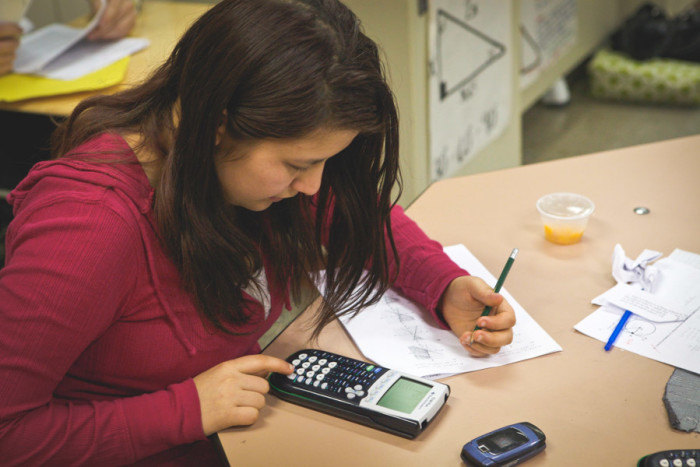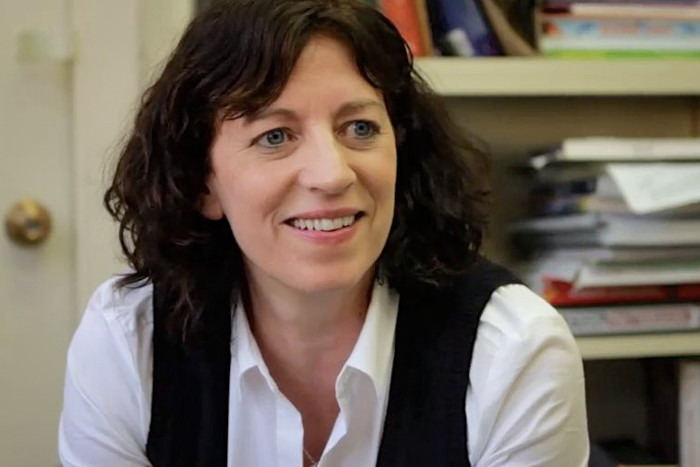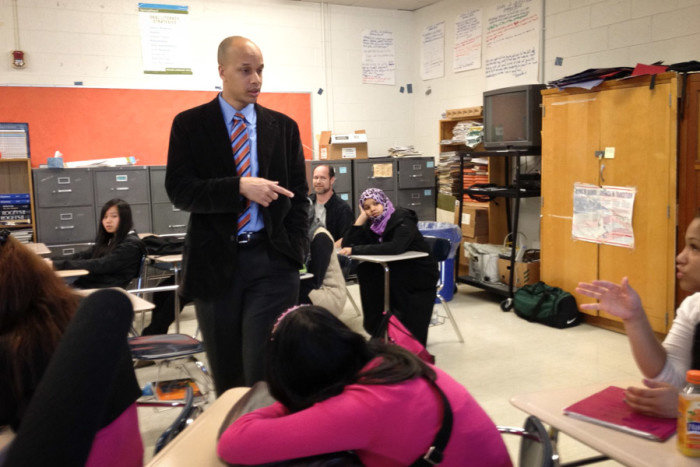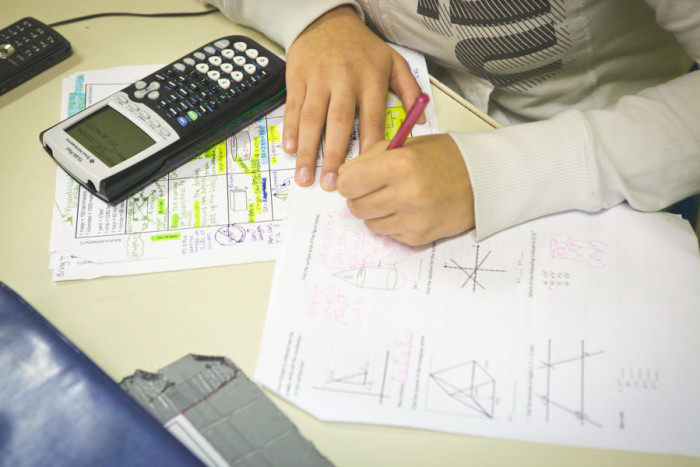
When you conjure your stereotype of Seattle’s Amazon high-tech workers, what do you see?
If your mental picture of the Amholes/Amabots/Amazombies changing our city is a transplant, rather than a native Seattleite, you’d be mostly right.
You’d certainly be hard pressed to find a black person born and raised in Seattle working as high-tech employee for the South Lake Union company (or any other local tech giants, for that matter).
But the sad truth is, part of the reason is the way we’re educating our young people.
There has ben an alarming ethnic and racial disparity in math achievement in Seattle Public Schools, even as Seattle marches at the forefront of education reforms.
Between 2010 and 2014 more than sixty percent of black students failed their end-of-course (EOC) algebra exams (compared with less than 20 percent of white students). Performance on the EOC geometry test was only slightly better.
Even with the new “Smarter Balanced” exams, which are based on recently implemented Common Core Standard, this “achievement gap” doesn’t seem to have narrowed. It exists for other demographic groups like Latinos, American Indians and migrants as well. And it’s not just SPS. The achievement gap is replicated in school districts across the state.
So what’s wrong?
At the classroom level, it has to do with inequitable teaching practices, says a revolutionary math education researchers at Stanford University.
Jo Boaler, author of a new book Mathematical Mindsets, envisions an academic world where everyone can learn math equitably regardless of their skin color, gender, sexual orientation or income.
I got the chance to see Boaler, a professor of mathematics education at Stanford University, and her colleague Carol Dweck, present their work at a seminar titled: “New Lens on Learning: The Hidden Value of Motivation, Grit and Engagement” put together by Education Writers Association.

At the conference, I was shocked to learn how gentrified and racialized math education in the U.S. is.
There’s a thinly veiled belief in the U.S. that white male students from rich backgrounds just happen to have the “math gene.”
Personally, I found this chauvinism amusing, given my background in public schools in Ethiopia, where the “math geniuses” weren’t typically the rich students, and often came from economically disadvantaged backgrounds.
I believe Boaler, who’s British, found this exclusivity perpetuated in American culture equally shocking.
As a mother of two daughters, she mentioned being extremely dissatisfied with a Disney show that portrayed girls as being particularly bad at math. But she suggests there’s something even more insidious behind the stereotypes:
“Some people revel in the inaccessibility of mathematics as it’s currently taught, especially if their own children are succeeding, because they want to keep clear a societal advantage… Mathematics has the greatest and most indefensible differences in achievement and participation for students of different ethnicities, genders, and socioeconomic income levels for any subject taught in the United States.”
And this disparity really matters, because math education is such a powerful predictor of future success.
Most universities require at least three years of high school math for college entrance, determining the opportunities available for the rest of student’s lives.
Earnings can also be predicted by amount, type and level of math course taken in high school. In 2004, Rose and Betts found that the more math classes students take in high school, especially in algebra and geometry, the higher their earnings were ten years later. Moreover, taking advanced math courses predicted an increase in salary as high as 19.50% ten years later.
According to her research, Boaler says there are some extremely successful strategies for producing more equitable math outcomes. She can frequently be heard calling for a “math revolution” to implement these approaches and narrow the achievement gap.
Here are 5 things Seattle teachers, schools and parents do to teach math more equitably. (Okay, really there’s six — and the last one is the most important):
1. Offer high-level content to all students
“Put simply, if students spend time in class where they are given access to high-level content, they achieve at higher levels,” Boaler writes. So why not give all students access to advanced math courses?
Rainier Beach High School took this sort of gamble recently, introducing all students to International Baccalaureate Curriculum, and has since topped the district in graduation rates, according to the Seattle Times. These results are pretty stunning. Only three years ago (before the introduction of the IB program) Rainier Beach was considered one of the worst high schools in Seattle.
According to Boaler, radical teachers have achieved similar results by offering advanced math classes to all students, dismissing the myth of “gifted child” which has been used to separate into those with and without math gene into separate courses (an injustice that was actually the subject of a class action lawsuit in California).

2. Dump the myth about the “math gift”
As in most STEM fields, in math education there tends to be a belief that aptitude for learning math is something genetically owned and not modifiable.
Boaler describes this “fixed mindset” as “the heart of inequity problems in Mathematics”.
“Although I am not saying that everyone is born with the same brain, I am saying that there is no such thing as a ‘math brain’ or ‘math gift’ as many believe,” Boaler wrote.
During the her presentation at the Stanford conference, I grilled Boaler on this: While I consider my own math stellar, I have a friend who is a math overachiever who always leaves me in the dust both in his speed and ability to solve difficult problems.
She told me the percentage of such people is negligible, and normally they fail when they start to believe their math ability is a given and start studying less, which is damaging in the long-run.
Boaler suggests moving from that “fixed mindset to a “growth mindset.”
Communicating that change to students in the classroom is both about what you say and don’t say: Don’t tell students they are “smart” when they get perfect score. Parents should never say they are “bad in math” in front of their children — especially girls. Both things just reinforce that “fixed mindset.”
Don’t praise students when they are achieving lower, but do celebrate mistakes. Research has found that the brain grows and a “spark” occurs when students make mistakes, even if they are not aware they’ve done so.
Boaler listed a few values she reiterates over and over to students in her the classroom to reinforce the “growth mindset”:
- That she believes in every one of them.
- That the math gene doesn’t exist and she expects all of them to achieve higher.
- That mistakes are valuable and she loves them. Failure and struggles are the most important part of math and learning, and they don’t mean her students can’t do math.
- That she doesn’t value students’ working quickly. She values depth.
- That she loves student questions and will share them on posters for other students to think about.
3. Encourage students to think deeply about mathematics
Students achieve higher when they are exposed to the kind of deep understanding that’s typically unavailable in math classrooms.
This is especially true for girls who studies show tend to be put off by procedural math. Boaler suggests getting at deep understanding by using project-based curriculum with real-life applications, giving students lots of opportunities to work together and get hands-on experience.
Boaler explains in her book that if math is taught using deep learning, instead of as performance subject, students can start to see it as important knowledge that empowers them to think quantitatively to solve problems in their work and lives.

4. Teach Students to work together
“Group work is a strategy I regard as critical to good mathematics work,” Boaler wrote, “But a fascinating study showed that group work may also be critical in countering racial inequities in mathematics achievement and course taking.”
Research shows that black students’ results were better when working together. Back in the ’70s, Uri Treisman of the University of California, Berkeley was alarmed to find 60% of black students failing required calculus courses, despite coming with good GPA’s from high school. Treisman introduced a new approach in which students were offered collaborative workshops so they could work mathematics together. The failure rates dramatically dropped to zero in two years.
More recent research studies by Boaler and others confirm this result.
“When students work on mathematics collaboratively, which also gives them opportunities to see and understand mathematics connections — equitable outcomes results,” she wrote.
5. Give girls and students of color additional encouragement to learn math and science
Due to the severely damaging stereotypes that they’ll underperform at math, girls and students of color need more encouragement than other students.
“Both girls and students of color — particularly underrepresented minorities — need thoughtful and positive messages to be given to them, about their valued place in mathematics,” Boaler wrote.
She gives a few examples how positive messages can be delivered to girls and students of color:
- Highlighting the achievements of women and underrepresented minorities in mathematics and STEM.
- Structuring classrooms so students are asked to become an expert on a subject and share their findings with other students.
- Increasing diversity of teachers to present role models to students of color.
“My main point is that it may not be enough, as a math teacher, to treat students equally in the pursuit of equity,” she wrote. “Some students face additional barriers and disadvantages, and we must work to address those quite deliberately if we are to achieve a more equitable society.”
Professor Jo Boaler is a part of this math parody mashup of Taylor Swift’s “Shake it Off” and Nicki Minaj’s “Anaconda”
6. Eliminate homework! (or at least change the nature of it)
Great news kids! PISA (The Program for International Student Assessment) conducted a survey of 13 million students to study the relationships between homework, achievement and equity, and found that homework is inherently inequitable, and that it “didn’t seem to raise achievement for students.”
“This is not an isolated finding; academic research has consistently found homework to either negatively affect or not affect achievement,” Boaler wrote.
Why? Students from less-privileged families rarely have quiet place to study or do homework at night, and their parents are more likely to be at work and unable to help). They also have fewer study materials such as books and devices with Internet access.
“When we assign homework to students, we provide barriers to the students who need our support,” Boaler wrote, “This fact, alone, makes homework indefensible to me.”
She suggests that teachers and school leaders who want to promote equity by eradicating homework arm themselves with resources like “The Case Against Homework” by Alfie Kohn and “The One World School House” by Sal Khan, which reinforce these conclusions.
But old habits die hard, and the quantity of homework is often seen as a measure of a curriculum’s rigor.
“If you want to retain a homework, then I recommend changing the nature homework,” Boaler suggests. “Instead of giving questions students need to answer in a performance orientation, give reflection questions to encourage students to think back on mathematics lesson and focus on the big ideas.”
There’s a widespread assumption is that “social-cultural context” is to blame for the math achievement gap. But there’s still shockingly little academic research on how context actually affects engagement in students of color (here’s the one example I found, based on a survey of studies conducted by Tyrone Howard).
Her recommendations are all things teachers can start to do right now, even without a much-needed overhaul of the way school districts approach math education.

